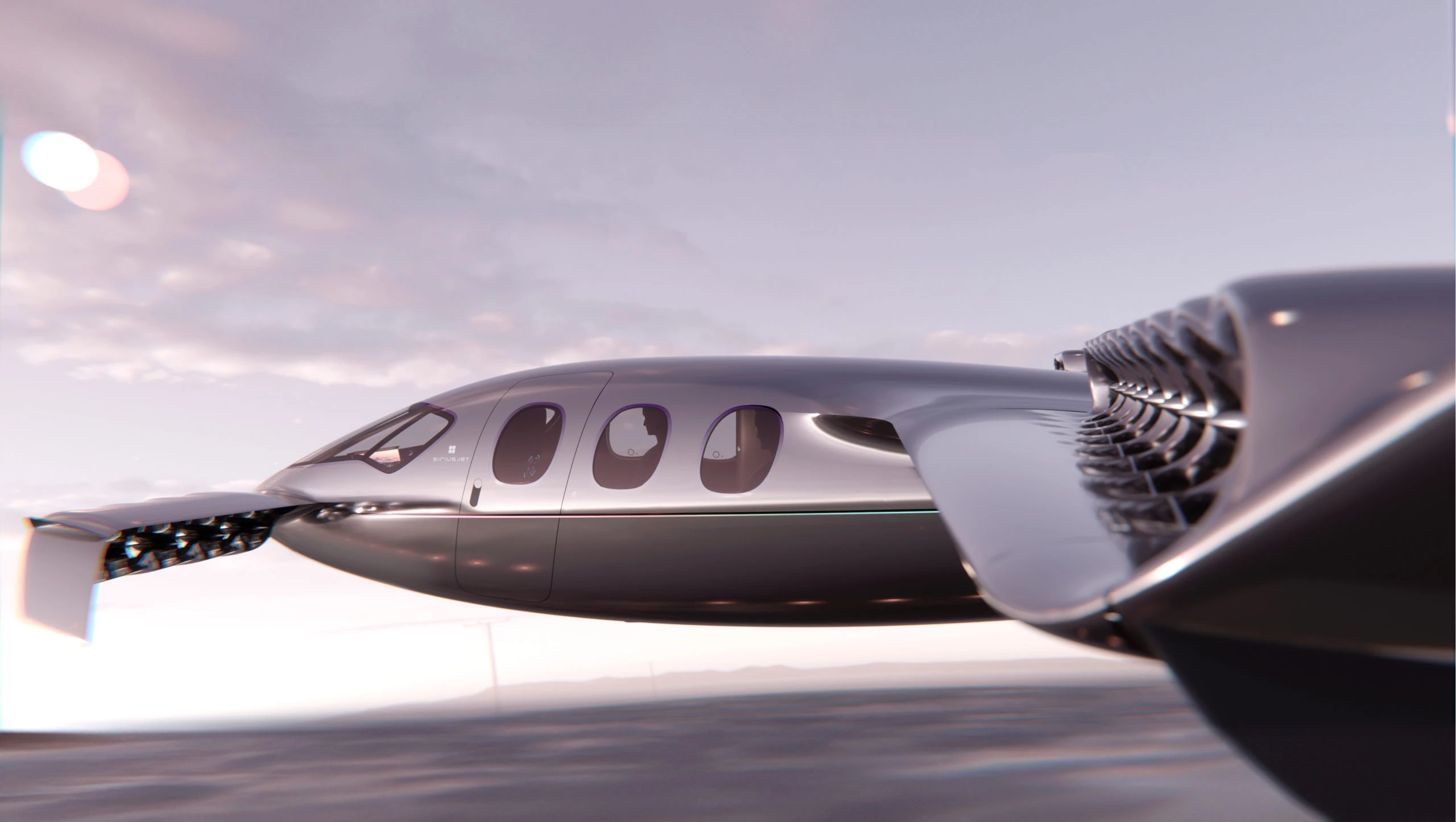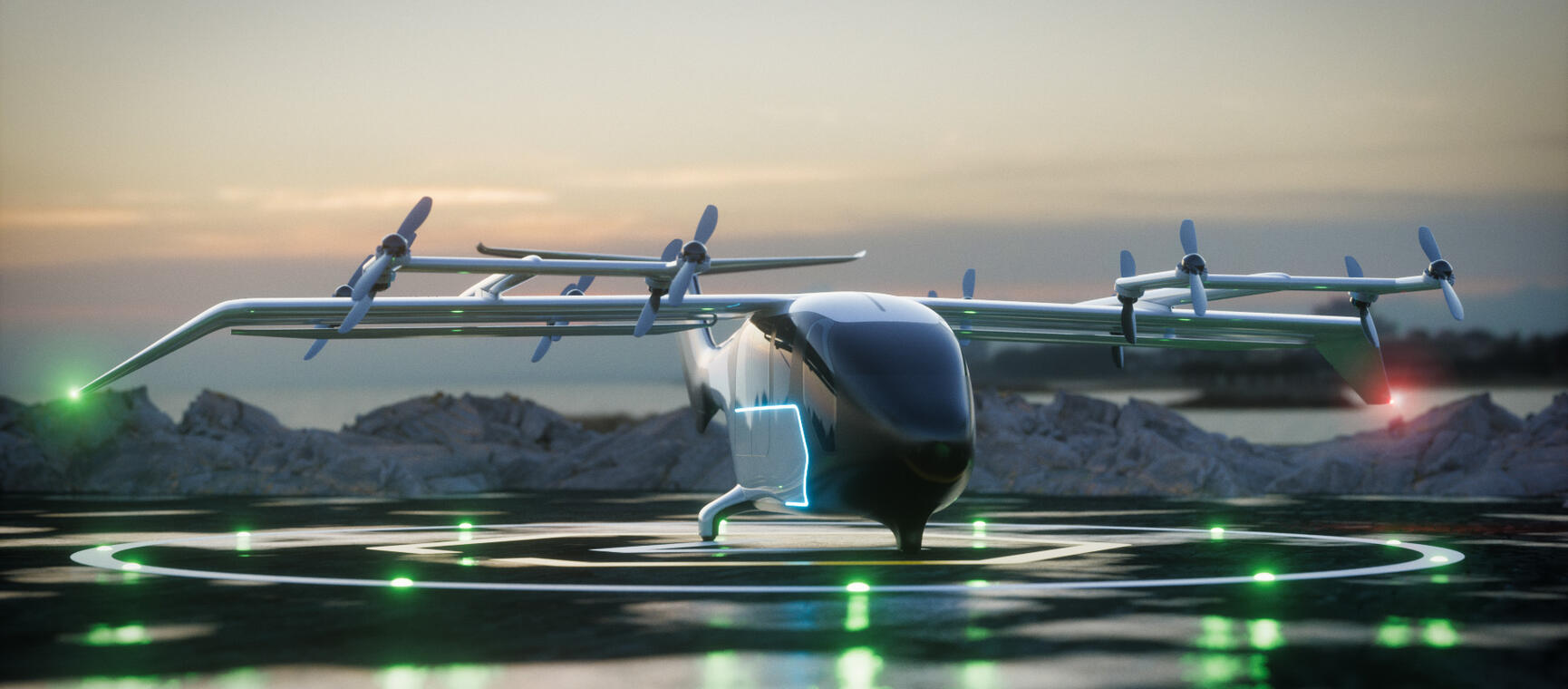In collaboration with BMW Group Designworks, Sirius Aviation AG has unveiled two new hydrogen-powered luxury business jets: the Sirius CEO-JET and the Sirius Adventure Jet. The global debut of these aircraft took place on June 20, 2024, at the MOVE Expo in London, a premier tech mobility event. Alexey Popov, Founder and CEO of Sirius Aviation AG, led the presentation alongside BMW Group Designworks, showcasing the jets' cutting-edge features and upscale design.
Sirius CEO-JET and Adventure Jet
- A hydrogen-electric powertrain for zero carbon emissions
- Cruising speeds of up to 323 knots
- A range of up to 1,150 miles
- Seating for three passengers
- Extensive customization options for the interior, including unique colors, upholstery, and amenities like champagne fridges and pet accommodations
- A pioneering hydrogen-electric powertrain for sustainable travel
- A range of up to 1,050 miles
- Speeds reaching 323 knots
- Accommodation for five passengers
- An exploration-ready design providing access to remote locations
Popov emphasized the company's mission to revolutionize air travel with sustainable solutions, stating, "The CEO-JET offers an eco-friendly option for business travel, while the Adventure Jet opens new horizons for global tourism and exploration."This development represents a significant step forward in addressing the environmental concerns associated with private aviation.\
By utilizing hydrogen-electric propulsion, Sirius Aviation aims to bridge the gap for individuals who desire to own a business jet while prioritizing eco-consciousness. The unveiling of these aircraft demonstrates the trend towards sustainable luxury travel and the aviation industry's efforts to reduce its carbon footprint.
Hydrogen-Electric Powertrain
Hydrogen fuel cells offer a high weight-to-power density ratio, making them ideal for aviation applications. The liquid hydrogen used in the CEO-JET needs to be stored at extremely low temperatures, but it provides a significant amount of energy, enabling longer flight ranges compared to battery-only electric aircraft. The CEO-JET can achieve a range of up to 1,150 miles (1,850 km) per trip, which is substantially higher than many other eVTOL aircraft.
The CEO-JET hydrogen-electric powertrain combines the benefits of hydrogen fuel cells with electric propulsion. This system includes a liquid hydrogen fuel tank that feeds a fuel cell stack. The fuel cell stack generates electricity through a chemical reaction between hydrogen and oxygen, producing water as a byproduct. This electricity is then used to charge the main battery banks, which power the aircraft's 28 ducted fans. The system offers several advantages:
- High energy density and efficiency, with a weight-to-power density ratio ideal for aviation applications
- Longer flight ranges compared to battery-only electric aircraft, up to 1,150 miles (1,850 km) per trip.
- Cost-effectiveness, with an estimated $500 to fully refill the fuel tank
- A regenerative power system featuring a booster battery pack that recharges during flight, enhancing operational efficiency
Here’s a detailed breakdown of how it works:
- Liquid Hydrogen Fuel Tank: The aircraft has a liquid hydrogen fuel tank that stores hydrogen at extremely low temperatures.
- Fuel Cell Stack: Liquid hydrogen is fed into a fuel cell stack, which reacts with air oxygen. This chemical reaction generates electricity and produces water as a byproduct.
- Electricity Generation: The electricity generated by the fuel cell stack is used to charge the main battery banks.
- Powering the Fans: The charged batteries then power the aircraft's 28 ducted fans responsible for propulsion.
This system ensures zero carbon emissions, as the only byproduct is water, making it an eco-friendly alternative to traditional jet fuel-powered aircraft.
The CEO-JET's propulsion system is designed to be much quieter than traditional helicopters. The ducted fans and electric motors produce noise levels comparable to a household dishwasher (less than 60 dB), making the aircraft more community-friendly and reducing noise pollution.
The CEO-JET features a booster battery pack that is active for only 90 seconds per flight cycle and recharges during flight. This regenerative power system ensures the aircraft can maintain optimal performance without frequent battery replacements, enhancing its operational efficiency.
Distributed Propulsion System
- More efficient thrust distribution and better aerodynamic control, improving overall performance and stability
- Reduced noise levels, with the ducted fans and electric motors producing noise comparable to a household dishwasher (less than 60 dB), making the aircraft more community-friendly
Here are the key components of the system:
- 28 Ducted Fans: The aircraft has 28 ducted fans strategically distributed across its wings and canard. This setup includes 20 fans embedded in the wings and 8 mounted in the canard.
- Individual Electric Motors: Each fan is driven by a lightweight electric motor, which incorporates a proprietary thermal management system to enhance efficiency.
- Thrust Distribution: The distributed propulsion system allows for more efficient thrust distribution and better aerodynamic control, improving the aircraft's overall performance and stability.
- Noise Reduction: The ducted fans and electric motors are designed to produce noise levels comparable to a household dishwasher (less than 60 dB), making the aircraft more community-friendly and reducing noise pollution.
Competitors in Hydrogen Aviation
ZeroAvia
- ZA600: Hydrogen-electric propulsion, 10-20 passengers, 300 NM (~345 miles) range, in development.
- ZA2000: Hydrogen-electric propulsion, 40-80 passengers, 700 NM (~805 miles) range, in development.
H2 Clipper
- Airship: Hydrogen-powered, designed for cargo (340,000 lbs), 6,000+ miles (9,656 km) range, 175 mph (281 km/h) speed, prototype planned for 2025.
H2FLY
- HY4: Hydrogen-electric propulsion, 4 passengers, 932 miles (1,500 km) range, prototype flying.
Alaka'i Technologies
- Skai: Hydrogen fuel cell, 5 passengers, 400 miles (643 km) range, prototype stage.
Lilium
- Lilium Jet: Electric propulsion, 6 passengers + 1 pilot, 155 miles (250 km) range, 175 mph (281 km/h) speed, in development.
AMSL Aero
- Vertiia: Hydrogen-powered, specifications not fully disclosed, in development.
Urban Aeronautics
- CityHawk: Hydrogen-powered, 5 passengers, specifications not fully disclosed, in development.
Comparison Table
| Company | Aircraft Model | Propulsion Type | Passenger Capacity | Range | Speed | Status |
|---|---|---|---|---|---|---|
| Sirius Aviation | CEO-JET | Hydrogen-electric | 3 | 1,150 miles (1,850 km) | 320 mph (515 km/h) | Prototype planned for 2025 |
| Sirius Aviation | Adventure Jet | Hydrogen-electric | 5 | 1,050 miles (1,850 km) | 320 mph (515 km/h) | Concept stage |
| ZeroAvia | ZA600 | Hydrogen-electric | 10-20 | 300 NM (~345 miles) | Not specified | In development |
| ZeroAvia | ZA2000 | Hydrogen-electric | 40-80 | 700 NM (~805 miles) | Not specified | In development |
| H2FLY | HY4 | Hydrogen-electric | 4 | 932 miles (1,500 km) | Not specified | Prototype flying |
| H2 Clipper | Airship | Hydrogen | Cargo (340,000 lbs) | 6,000+ miles (9,656 km) | 175 mph (281 km/h) | Prototype planned for 2025 |
| Alaka'i Technologies | Skai | Hydrogen fuel cell | 5 | 400 miles (643 km) | Not specified | Prototype stage |
| Lilium | Lilium Jet | Electric | 6 + 1 pilot | 155 miles (250 km) | 175 mph (281 km/h) | In development |
| AMSL Aero | Vertiia | Hydrogen-powered | Not specified | Not specified | Not specified | In development |
| Urban Aeronautics | CityHawk | Hydrogen-powered | 5 | Not specified | Not specified | In development |
The Sirius CEO-JET and Adventure Jet are notable for their 1,150-mile range and 320 mph cruising speed, making them competitive in the hydrogen-electric aircraft market. ZeroAvia focuses on larger passenger capacities, while H2 Clipper specializes in cargo transport with much longer ranges. Although the Lilium Jet is electric rather than hydrogen-powered, it competes in the same market with its eVTOL capabilities.
Future Innovations in Hydrogen Aviation
The competition in the zero-emission aircraft space is growing as the aviation industry seeks more sustainable solutions. The Sirius jets offer a compelling combination of range, speed, and luxury, positioning them well against other developing hydrogen-electric and electric aircraft. As these technologies evolve, the specifications and capabilities of these aircraft may change, further shaping the future of sustainable air travel.




